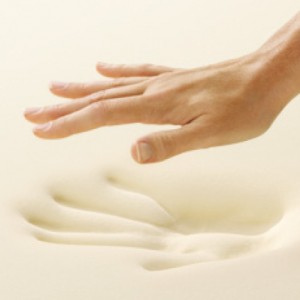
We’ve all seen the commercials, right? The one where someone jumps up and down on the bed alongside a wine glass to show that the mattress doesn’t transfer motion. Or maybe you’re familiar with the one where the bowling ball is dropped to display the same effect.
While this is an impressive and tempting feat, it wouldn’t be very wise to attempt the jumping-glass of wine experiment on an innerspring mattress.
That is unless you’re actually looking for a reason to finally get a new mattress. Then by all means, have a blast.
In the previous Mattress Types article, Mattress Types: Coil/Innerspring Mattress, we discussed innerspring mattresses along with some of their pros and cons.
What exactly is memory foam?
Memory foam actually isn’t a new concept. It was originally developed by NASA in an attempt to improve durability and safety of aircraft cushions. NASA released the material into the public domain in the 1980’s.
The famous Tempur-Pedic mattress we’ve all come to know resulted from a single company who was willing to work with the foam after NASA’s release. Initial reluctance was caused by the difficulty of the foam’s manufacturing process.
There is a multitude of people who are thankful for that company every single night.
Memory foam is more dense than traditional innerspring mattresses, which is what helps make the material so supportive.
Looking for a comparable sleeping experience without forking over all of that money? Consider a number of mattress pads that mimic the effects of the more expensive memory foam mattresses. Some actually do a pretty good job considering the relatively minimal asking price.
Take the memory foam experience to the max with pillows of differing shapes and sizes that are constructed of the same contour-fitting material.
